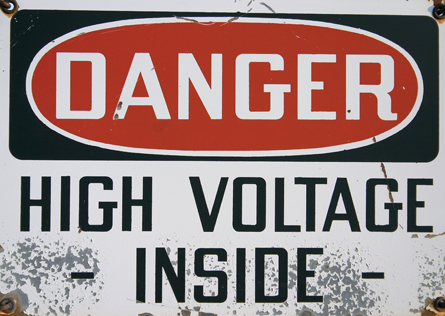Module 3
1. Module 3
1.30. Lesson 5
Module 3—Electrical Phenomena
Lesson 5—Electric Potential Energy
 Get Focused
Get Focused

© Igor Talpalatski/shutterstock
Danger signs are always placed near high-voltage equipment. What makes this equipment so dangerous? Why are high-voltage power lines more dangerous to humans than the 120-volt power lines commonly found in houses and stores?
The truth is that high voltages are, in fact, not always dangerous. For example, when you rub a balloon on your head, you can generate thousands of volts completely safely.
Other devices, such as electric fencing for livestock, operate at tens of thousands of volts yet never cause any permanent damage to livestock that come into contact with it. This is in contrast to the relatively low voltage found in homes, which, as it turns out, is much more dangerous. When is high voltage dangerous? Why?
In this lesson you will explore the following essential questions:
- What is electric potential energy?
- How is electric potential energy similar to gravitational potential energy?
- What is voltage?
- How is voltage calculated?
 Module 3: Lesson 5 Assignments
Module 3: Lesson 5 Assignments
Your teacher-marked Module 3: Lesson 5 Assignment requires you to submit a response to the following:
-
Lab—LAB 1, LAB 2, LAB 3, LAB 4, LAB 5, LAB 6, LAB 7, LAB 8, and LAB 9
You must decide what to do with the questions that are not marked by the teacher.
Remember that these questions provide you with the practice and feedback that you need to successfully complete this course. You should respond to all the questions and place those answers in your course folder.